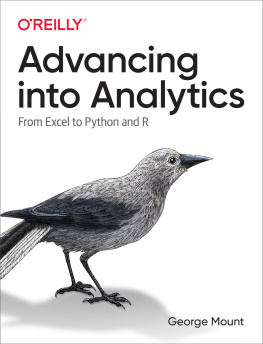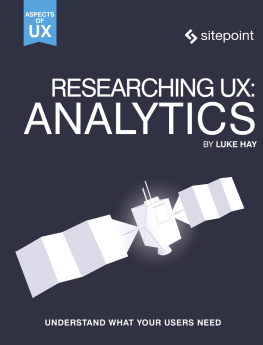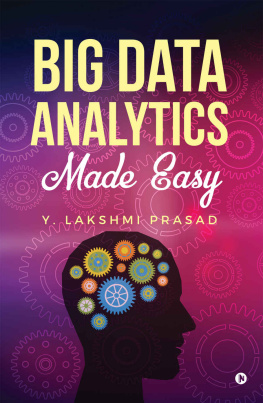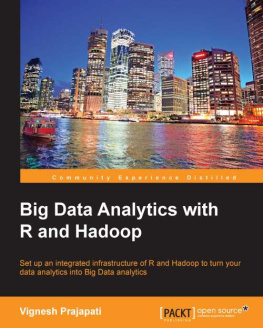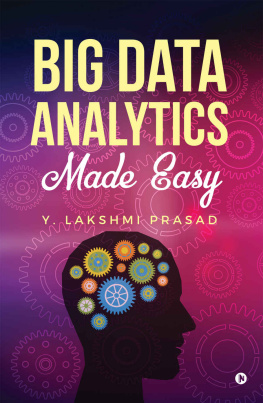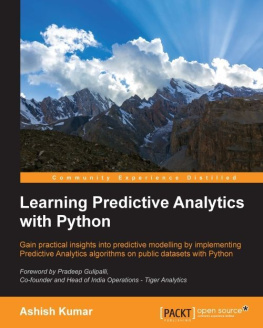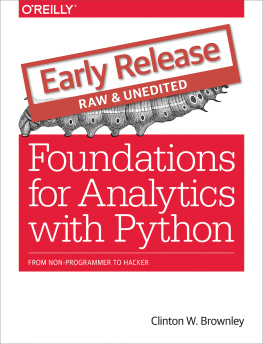George Mount - Advancing into Analytics: From Excel to Python and R
Here you can read online George Mount - Advancing into Analytics: From Excel to Python and R full text of the book (entire story) in english for free. Download pdf and epub, get meaning, cover and reviews about this ebook. year: 2021, publisher: Oreilly & Associates Inc, genre: Children. Description of the work, (preface) as well as reviews are available. Best literature library LitArk.com created for fans of good reading and offers a wide selection of genres:
Romance novel
Science fiction
Adventure
Detective
Science
History
Home and family
Prose
Art
Politics
Computer
Non-fiction
Religion
Business
Children
Humor
Choose a favorite category and find really read worthwhile books. Enjoy immersion in the world of imagination, feel the emotions of the characters or learn something new for yourself, make an fascinating discovery.
- Book:Advancing into Analytics: From Excel to Python and R
- Author:
- Publisher:Oreilly & Associates Inc
- Genre:
- Year:2021
- Rating:4 / 5
- Favourites:Add to favourites
- Your mark:
Advancing into Analytics: From Excel to Python and R: summary, description and annotation
We offer to read an annotation, description, summary or preface (depends on what the author of the book "Advancing into Analytics: From Excel to Python and R" wrote himself). If you haven't found the necessary information about the book — write in the comments, we will try to find it.
Data analytics may seem daunting, but if youre familiar with Excel, you have a head start that can help you make the leap into analytics. Advancing into Analytics will lower your learning curve.
Author George Mount, founder and CEO of Stringfest Analytics, clearly and gently guides intermediate Excel users to a solid understanding of analytics and the data stack. This book demonstrates key statistical concepts from spreadsheets and pivots your existing knowledge about data manipulation into R and Python programming.
With this practical book at your side, youll learn how to:
- Explore a dataset for potential research questions to check assumptions and to build hypotheses
- Make compelling business recommendations using inferential statistics
- Load, view, and write datasets using R and Python
- Perform common data wrangling tasks such as sorting, filtering, and aggregating using R and Python
- Navigate and execute code in Jupyter notebooks
- Identify, install, and implement the most useful open source packages for your needs
- And more
George Mount: author's other books
Who wrote Advancing into Analytics: From Excel to Python and R? Find out the surname, the name of the author of the book and a list of all author's works by series.

